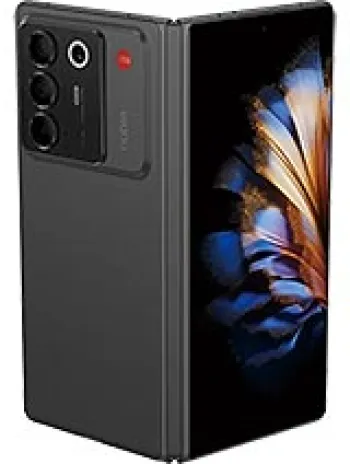
Design and Build
The ZTE Blade V7 boasts an impressive design that marries aesthetics with practicality. It measures 146 x 72.5 x 7.5 mm, making it slim and easy to hold. Weighing just 136 grams, the device is light, adding to its portability and ease of use. The hybrid dual SIM feature is particularly useful for those who travel frequently or manage multiple numbers.
Display
The ZTE Blade V7 features a 5.2-inch IPS LCD screen, offering a full HD resolution of 1080 x 1920 pixels. This results in a pixel density of approximately 424 ppi, ensuring sharp and vibrant visuals. The screen-to-body ratio of approximately 70.4% optimizes the viewing area without making the device too bulky.
Performance
Under the hood, the ZTE Blade V7 is powered by a Mediatek MT6753 chipset built on the 28 nm process. Equipped with an Octa-core 1.3 GHz Cortex-A53 CPU and a Mali-T720MP3 GPU, the device handles everyday tasks smoothly. However, it may not be suitable for intense gaming or heavy multitasking due to its modest 2GB of RAM.
Operating System
The device operates on Android 6.0, also known as Marshmallow. While it offers a stable and user-friendly experience, the OS is somewhat dated, and users may miss out on newer features introduced in more recent Android versions.
Camera
Main Camera
The 13 MP main camera is capable of taking decent photographs, especially in well-lit conditions. Features like PDAF (Phase Detection Auto Focus), dual-LED dual-tone flash, HDR, and panorama enhance the photo-taking experience, while video recording is supported at 1080p@30fps.
Selfie Camera
The 5 MP front-facing camera is sufficient for selfies and video calls, although it lacks some of the advanced features found in more modern smartphones.
Storage
With 16GB of internal storage, the ZTE Blade V7 provides a basic space for apps and media. For users who require more, the microSDXC card slot offers expandable storage, though it uses a shared SIM slot.
Battery Life
The device is equipped with a non-removable Li-Ion 2500 mAh battery, which offers moderate battery life. Considering its specifications, the battery should last a full day with standard use, but heavy users might need to recharge before day's end.
Connectivity
The ZTE Blade V7 supports GSM, HSPA, and LTE technologies, ensuring solid network performance. The absence of NFC is noticeable but not surprising given the device’s price range. Connectivity features include Wi-Fi 802.11 b/g/n, Bluetooth 4.0, GPS, FM radio, and a microUSB 2.0 port with OTG support.
Sound
The device includes a loudspeaker and a 3.5mm jack, a welcome feature for users who prefer wired headphones or external audio devices.
Sensors and Features
The ZTE Blade V7 is equipped with an accelerometer, gyro, proximity sensor, and compass. These sensors enhance the device's functionality, catering to applications that require motion detection and positional awareness.
Market Position and Price
Launched in February 2016, the ZTE Blade V7 was marketed as a mid-range smartphone. With a price tag of about 150 EUR during its release, it offered a competitive package for budget-conscious consumers. However, as of now, the product is discontinued and might be available only through second-hand markets.
Conclusion
In summary, the ZTE Blade V7 is a well-rounded smartphone that delivers a solid performance for its class. While it may not stand out in today's market due to evolving technology and increasing demands, it remains a notable choice for users seeking a reliable and affordable option. The combination of a decent camera, expandable storage, and robust connectivity options highlights its value proposition during its market period.
Key Features of ZTE Blade V7
- Supports GSM, HSPA, and LTE networks providing wide mobile connectivity options.
- Compact and lightweight design with dimensions of 146 x 72.5 x 7.5 mm and a weight of 136 g.
- 5.2-inch IPS LCD display with a resolution of 1080 x 1920 pixels, offering vivid and sharp visuals.
- Powered by an Octa-core 1.3 GHz Cortex-A53 CPU with a Mediatek MT6753 chipset for smooth performance.
- Internal storage of 16GB paired with 2GB RAM, with support for microSDXC expansion.
- 13 MP main camera featuring PDAF, Dual-LED dual-tone flash, HDR, and panorama features.
- Android 6.0 (Marshmallow) operating system for enhanced user experience.
- Hybrid Dual SIM slot for optimal flexibility in managing network connections.
- Includes essential sensors like accelerometer, gyro, proximity, and compass.
- 3.5mm audio jack and loudspeaker support for convenient audio connectivity.
- FM radio and microUSB 2.0 with OTG capabilities for additional media and connectivity options.
- Available in Gold and Gray color variants.
ZTE Blade V7 Disadvantages
- Outdated Android Version: Ships with Android 6.0 (Marshmallow) which is quite outdated.
- Limited Storage: 16GB internal storage may not be sufficient for many users.
- Low RAM Capacity: 2GB RAM might not handle heavy multitasking effectively in the current app environment.
- Shared SIM Slot: The microSDXC uses the shared SIM slot, limiting dual-SIM functionality.
- No NFC Support: Lacks NFC feature, limiting capabilities like contactless payments.
- Non-Removable Battery: The 2500 mAh battery is non-removable, making replacements more cumbersome.
- Mediocre Front Camera: 5 MP selfie camera may not deliver high-quality selfie photos.
- No Fast Charging: Absence of fast charging technology may result in longer charging times.


View Also
More Phones
All Rights Reserved +14266 Phones © Mobilawy 2025

























